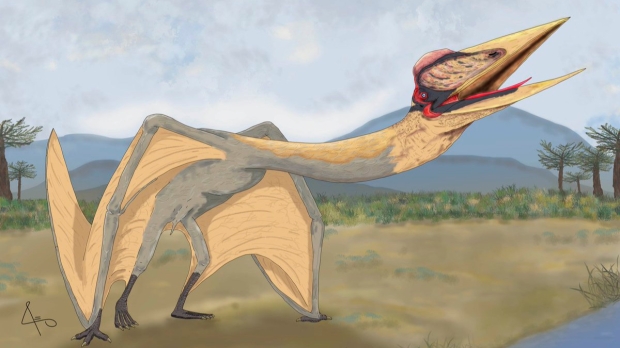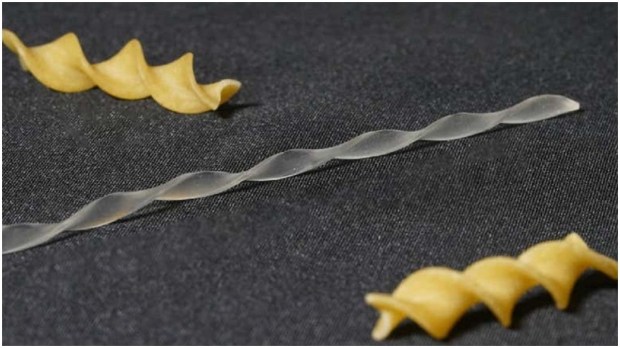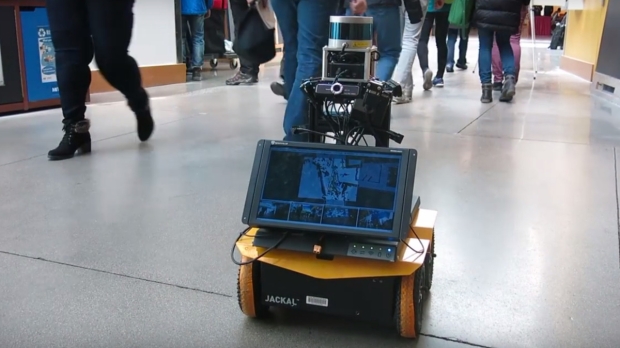Science, Space, Health & Robotics News - Page 142
SpaceX temporarily testing Starlink internet on planes, helicopters
SpaceX has received testing authorization from the FCC to use the Starlink satellite internet service to helicopters, and planes.
Space Exploration Technologies Corporation's (SpaceX) Starlink satellite internet service is now testing in-flight internet connectivity to commercial airlines -- you know, planes -- with SpaceX and Tesla CEO Elon Musk testing it on his private jet.
The FCC filing happened in February 2022, with approval last week: allowing Starlink to test out their satellite internet services in the air. The filing explains: "In this experimental application, SpaceX seeks to expand this testing to allow operation of terminals on a variety of fixed wing and rotary airframes to support internal, commercial, and government research projects".
Continue reading: SpaceX temporarily testing Starlink internet on planes, helicopters (full post)
Massive 'dragon of death' fossils uncovered, over 86 million years old
A study on the fossil specimens titled "Thanatosdrakon amaru, gen. et sp. nov., a giant azhdarchid pterosaur from the Upper Cretaceous of Argentina has been published in the journal Cretaceous Research.
Remains from the largest pterosaur species to have lived have been unearthed in Argentina in South America. Paleontologists found two specimens in the Plottier Formation, located in the Province of Mendoza. The wingspans of each specimen were 23 feet (7 meters) wide and 30 feet (9.1 meters) wide, respectively.
The specimens belong to the species Thanatosdrakon amaru and is the only species within the Thanatosdrakon genus, which belong to the Azhdarchidae family of pterosaurs. Its name derives from "Thanatos," meaning "death," "drakon" meaning "dragon", and "amaru" meaning "flying serpent." The species lived during the Cretaceous period between approximately 145.5 million and 65.5 million years ago, and these particular specimens are at least 86 million years old.
Continue reading: Massive 'dragon of death' fossils uncovered, over 86 million years old (full post)
Scientists have revealed where aliens are most likely to be found
A study on binary stars and their possibility for alien life titled "Binarity of a protostar affects the evolution of the disk and planets" has been published in the journal Nature.
Researchers from the University of Copenhagen have determined that planetary systems form very differently around binary stars compared to how they do around singular stars. Almost half of all stars similar in size to our Sun exist in binary star systems, and in the search for potential alien life, looking for stars similar to our own is a good start.
"The result is exciting since the search for extraterrestrial life will be equipped with several new, extremely powerful instruments within the coming years. This enhances the significance of understanding how planets are formed around different types of stars. Such results may pinpoint places which would be especially interesting to probe for the existence of life," said head of the project Professor Jes Kristian Jorgensen.
Continue reading: Scientists have revealed where aliens are most likely to be found (full post)
NASA explains this striking irregular galaxy Hubble photographed
NASA has taken to its blog to hone in on an elliptical galaxy and a surrounding unusual star-forming dwarf galaxy.
The space agency explains that the elliptical galaxy is called NGC 541, and the irregular dwarf galaxy seen as the blueish object in the above image is named the Minkowski's Object. Notably, NASA explains that elliptical galaxies are almost egg-shaped galaxies that consists of a dense group of stars that have formed after a galaxy merger. These galaxies shoot out radio jets that can't be seen by human eyes, but are detectable with NASA's high-tech instruments equipped to space telescopes such as Hubble.
Furthermore, the radio jet that has been shot out of NGC 541 has "likely" caused the star-formation that can be seen in Minkowski's Object as the extreme heat from the jet compresses the surrounding gas, heating it up - ionizing it. The ionized gas converts back to its lower-energy state, resulting in a radiation cloud. Over time this cloud then cools, beginning the slow process of starbirth. For context, Minkowski's Object holds approximately 20 million stars and is only 7.5 million years old.
Continue reading: NASA explains this striking irregular galaxy Hubble photographed (full post)
A space burial company is preparing to launch 47 people's remains soon
Celestis, a space company based out of Texas, launches cremated human remains into space for space burials.
The cremated remains of 47 individuals from five countries are being launched by Celestis from Florida's Space Coast this week. The remains will be onboard a telecommunications satellite, which will orbit Earth for about a decade until it is decommissioned and eventually de-orbits and burns up on re-entry through the atmosphere.
Celestis was founded in 1994, and innovations in the space industry have allowed the company to increase its frequency of launches from about one per seven-year period to having five scheduled in the upcoming 14 months. The packages the company offers start at around $5,000.
Continue reading: A space burial company is preparing to launch 47 people's remains soon (full post)
Pasta-shaped robots with no batteries or arms are escaping mazes
Researchers have constructed a new soft robot capable of navigating through mazes without the use of batteries, motors, or computers.
The new spiral-shaped device is made from a rubber-like material that is impregnated with liquid crystals. When the device is placed on a surface, and that surface is heated to at least 131 Fahrenheit, the areas on the device that are touching the surface begin to heat up and expand, while the areas that aren't touching the surface "remain static". The result of this interaction with the heated up surface causes the device to snap in a twisting motion that moves it up to 3.8 millimeters per second.
Notably, when placed in a maze, the soft robot moves in one direction until it reaches an obstacle. Suppose the device cannot pass the obstacle after several attempts. In that case, it will switch its orientation to the opposite of what it currently was, meaning the soft robot will simply collide with all obstacles in its path until it eventually finds its correct path out of the maze. Furthermore, the researchers were able to demonstrate the soft robot with no intelligent control was able to navigate over sand, pebbles, climb slopes, and even push small aluminum cylinders.
Continue reading: Pasta-shaped robots with no batteries or arms are escaping mazes (full post)
NASA says there is 'something weird is going on' in the universe
The space agency took to its blog on May 19 to share a new study that focused on the universe's expansion rate.
The press release found on the NASA website details a study that used the Hubble Space Telescope, along with other highly advanced instruments designed to observe the universe in a variety of different ways, to accumulate a large pool of data that was boiled down to what is now considered "the most precise measure of the expansion rate for the universe" to date.
The increase in precision has come with its own problems, as researchers found a discrepancy that has left them scratching their heads. The discrepancy is between the "expansion rate as measured in the local universe compared to independent observations from right after the big bang, which predict a different expansion value." Furthermore, NASA states that previous data from Hubble indicated the universe was expanding at a rate of 72 plus or minus 8 kilometers per second per megaparsec, which is much faster than the researchers' prediction of 67.5
Continue reading: NASA says there is 'something weird is going on' in the universe (full post)
New 'socially aware' robot can predict what people will do
A study on the socially aware robot titled "High-efficiency cooling via the monolithic integration of copper on electronic devices" is available on the pre-print server arXiv.
Researchers from the University of Toronto (U of T) have devised a new method for robots to move through the world without colliding with people. Their robot uses Spatiotemporal Occupancy Grid Maps (SOGM) to predict where dynamic obstacles like people will move to with time. This video shows a real-life perspective of the robot moving paired with its internal digital representation.
"The principle of our work is to have a robot predict what people are going to do in the immediate future. This allows the robot to anticipate the movement of people it encounters rather than react once confronted with those obstacles," said Hugues Thomas, a post-doctoral researcher at the U of T Institute for Aerospace Studies in Faculty of Applied Science & Engineering.
Continue reading: New 'socially aware' robot can predict what people will do (full post)
New breakthrough in cooling computers offers up to 740% more power
A study on the new cooling method titled "High-efficiency cooling via the monolithic integration of copper on electronic devices" has been published in the journal Nature Electronics.
Researchers from the University of Illinois at Urbana-Champaign (UIUC) and the University of California, Berkeley (UC Berkeley) have invented a new cooling solution for electronic devices, dramatically increasing space efficiency and the power per unit volume of the devices. The team sought to address three shortcomings they identified in current cooling solutions.
The first is that they "can be expensive and difficult to scale up." Secondly, conventional heat spreaders or heat sinks are attached to the top of a device, while most of the heat is typically generated underneath the electronic device, so the cooling solution is less efficient. Thirdly, thermal interface materials (TIMs) like thermal paste or pads are necessary to connect such cooling solutions to electronic devices and have their own inherent inefficiencies.
Continue reading: New breakthrough in cooling computers offers up to 740% more power (full post)
This spacecraft caught a wonderfully unique view of the lunar eclipse
NASA's Lucy space probe had a unique perspective of the recent total lunar eclipse on the night of May 15th.
Here on Earth, during a total lunar eclipse, the Moon takes on a reddish appearance due to the remaining red wavelengths of sunlight that make their way around Earth and onto the surface of the Moon. However, the Lucy probe operated by the Southwest Research Institute (SwRI) was able to observe the Moon and Earth while about 100 million kilometers (65 million miles) from the latter.
"While total lunar eclipses aren't that rare - they happen every year or so - it isn't that often that you get a chance to observe them from an entirely new angle. When the team realized Lucy had a chance to observe this lunar eclipse as a part of the instrument calibration process, everyone was incredibly excited," said Principal Investigator Dr. Hal Levison of the SwRI.
Continue reading: This spacecraft caught a wonderfully unique view of the lunar eclipse (full post)











